"I have worked all my life, not for fame and recognition - not for money and other benefits - not to humiliate others - but for the cause itself, to capture as much of this tribe's life as I can as a conscious member."
Perhaps no other artist has captured life in Moravian Slovácko and its rich folk traditions, festivals and everyday life at the turn of the 19th and 20th centuries as faithfully as Josef "Joža" Uprka, a unique Moravian painter and graphic artist, representative of Impressionism, Romantic Historicism and Art Nouveau Decoratism. His work is an important ethnographic document and valuable ethnographic evidence of the regional folklore of South Moravia.
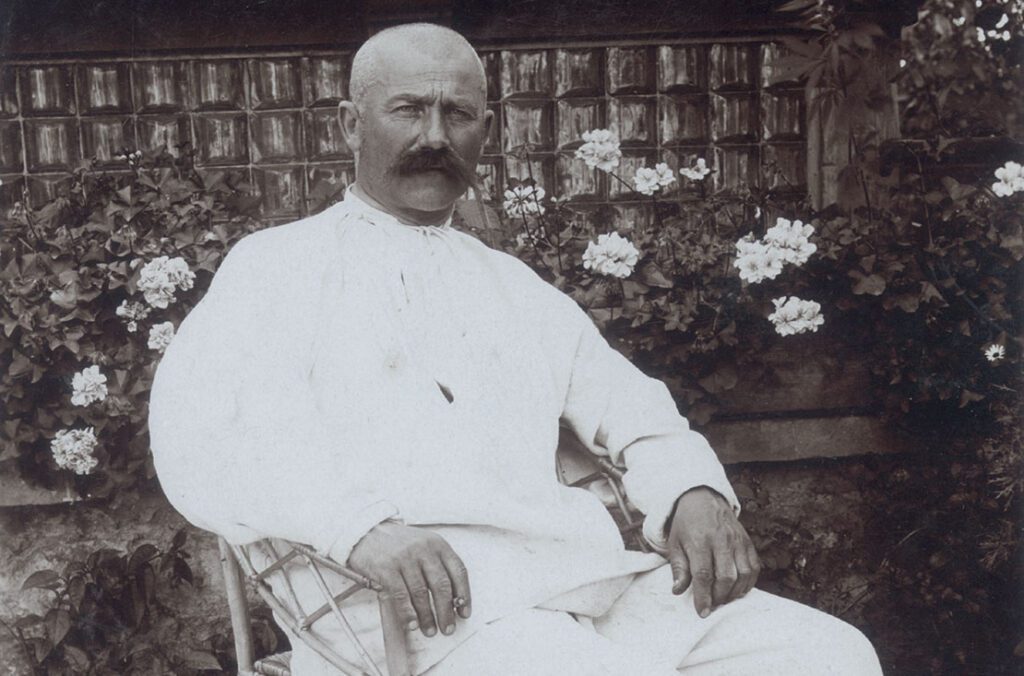
He was born on 26 October 1861 in the village of Kněždub, not far from Strážnice, as the eldest son of Jan Uprka, a peasant, and his second wife Eva, née Machálková. He had a sister Alžběta and brothers Martin and František, who became famous as a sculptor. Both of them inherited their artistic talents from their father, who, as a self-taught painter, liked to paint various figurative scenes in the folk style on glass, furniture and on the walls of the house. Unfortunately, he died in February 1874 of blood poisoning and Joža, as the eldest, had to help his widowed mother with the farm. She was not very supportive of his desire for an artistic education, just like the youngest Franta, but she accepted it when the second-born Martin took over the farm.
Joža went to school in Strážnice, but only up to the fourth grade, then he enrolled in Olomouc at the German Teacher's Institute, from where he soon transferred to the Olomouc Slavic Gymnasium. Even then he was a skilled painter. His classmate at the gymnasium was the later doctor and mayor of Prostějov, Ondřej Přikryl, then the chief editor and publisher of the student magazine The Grove with a humorous appendix Hornet. Uprka became a tribal illustrator Groves.
In 1881, however, he left the Olomouc grammar school and continued his studies at the Academy of Fine Arts in Prague under František Čermák. Dissatisfied with the conservative teaching here, he left for Germany in 1884 to study at the Munich Academy. In the liberal environment of this school he had a much greater opportunity to paint according to his own ideas. He had undeniable talent and did not like to be influenced by professors, so he did not stay at any school. In Munich, he co-founded an association The Screwdriver, whose other members were Alfons Mucha, Antonín Slavíček and Luděk Marold.
After finishing his studies in Munich in 1887, he wanted to complete his education at the Academy of Fine Arts in Prague, where new, progressive tendencies appeared in teaching. However, he left there after a year to settle permanently in his native region, with which he had been intrinsically linked all his life. Although he was not very fond of the "Western Slavs", as he called the Czechs, his departure from the centre of Prague was not connected with unfavourable criticism or the reserved attitude of the Prague salons towards the "Moravian element". Uprka knew that he would not have sufficient creative inspiration and energy outside Slovácko.
A significant part of his work was created in Slovácko, he found many friends and also several of his first patrons. His works appeared more and more frequently at exhibitions and despite the unfavourable attitude of conservative critics, Uprka entered the cultural consciousness of the nation as a personality that could not be overlooked in the context of Czech painting at that time.
At the turn of 1892-93, thanks to a scholarship, he visited Paris, where he studied the works of the Old Masters and became acquainted with contemporary art, especially the works of the French Realists, who focused on the social reality of rural man, and the Impressionists, who dealt with the relationship between colour and light.
With the help of Alfons Mucha, he participated in the Paris Salon of French Artists in 1894 with a painting Pilgrimage at St. Anthony's and won one of the main prizes - Mention honorable, which made him visible abroad. For the same painting, only in a larger format, he received the gold annual medal of the Czech Academy of Sciences and Arts in 1895.
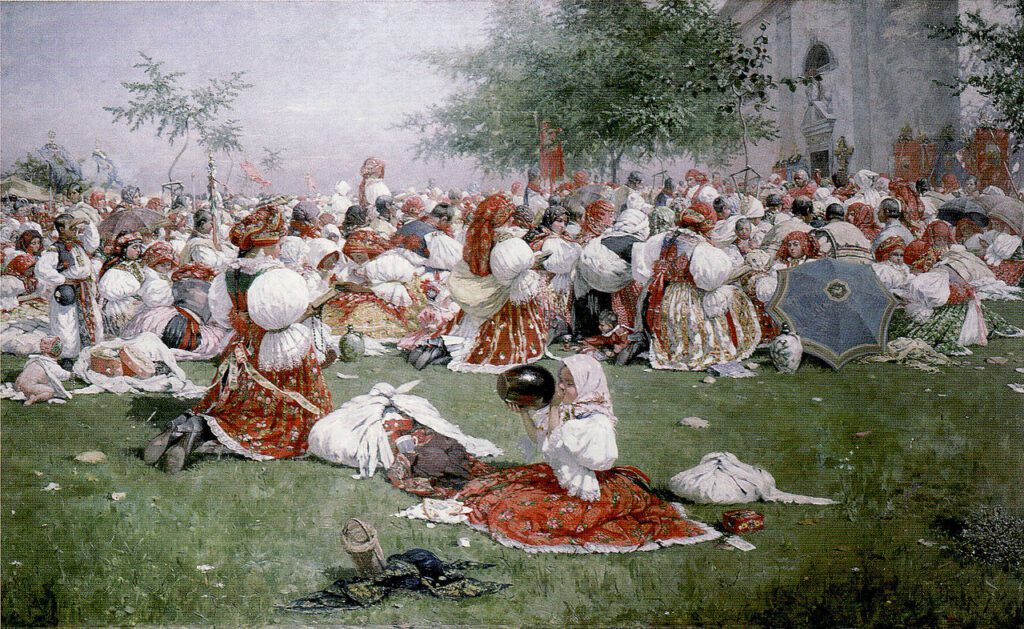
From Paris, Mucha went to London and on his way back he stopped in the Netherlands, Belgium and Munich. Even in his later years, regular visits to Vienna and Munich allowed him to orient himself in the European art scene. His trips to the Balkans, Italy, Egypt and Russia are well known.
Probably his most famous painting Ride of Kings was founded in 1897 in Vlčnov. It exists in two versions, realistic and impressionistic. It is considered one of the top works of Czech figurative painting influenced by Impressionism. In the same year, Uprka had his first group exhibition at the Topič Salon in Prague and critics spoke highly of him. The exhibition became a cultural event, and visitors to the Salon were able to see over a hundred originals, including a completed Ride of Kings. Monthly of the Prague Mánes Association Free directions published an entire issue on Uprka, the painter Zdenka Braunerová, with whom he had a long friendship, reported on the exhibition in Views and Vilém Mrštík wrote a contribution for the Viennese Zeit.
The Prague exhibition was also financially successful for Uprka, so the thirty-six-year-old painter could afford to buy a plot of land with a small house in Hroznová Lhota near his native Kněždub and start a family. Shortly after moving into the house, which he also used as a studio, he had a son, Jožka, whom he had with the folk painter Anežka Králíková from Svatobořice. The wedding followed three months later, in May 1899. Anežka was the model for several of his paintings, e.g. From the church, Girl from Milotic (Svatobořičanka).
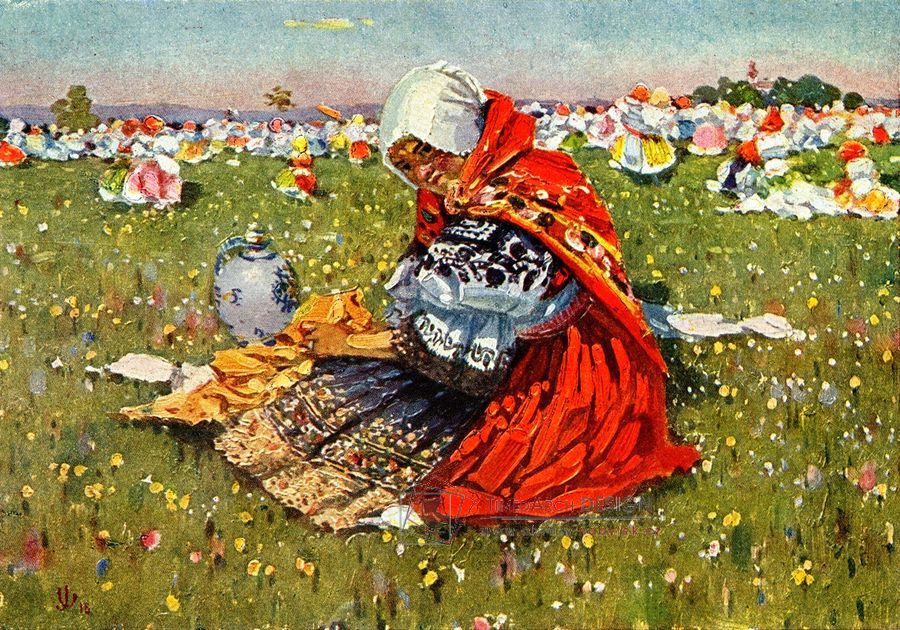
When the famous French sculptor August Rodin visited Prague in 1902, Zdenka Braunerová invited him to an exhibition of Moravian artists in Hodonín and he also visited Uprka in Hroznová Lhota. Rodin was delighted with the Slovak costumes and songs and the friendly reception he received. Uprka's wife was in a blessed state at the time and Rodin gave her a ring which he wore on his hand.
In 1904 Uprka had his house rebuilt according to the design of architect Dušan Jurkovič into a two-storey villa with wooden elements inspired by folk architecture. He hosted friends and personalities from the world of culture, such as Alfons Mucha, the Mrštík brothers, Zdenka Braunerová, Herbert Masaryk, Leoš Janáček and Vítězslav Novák.
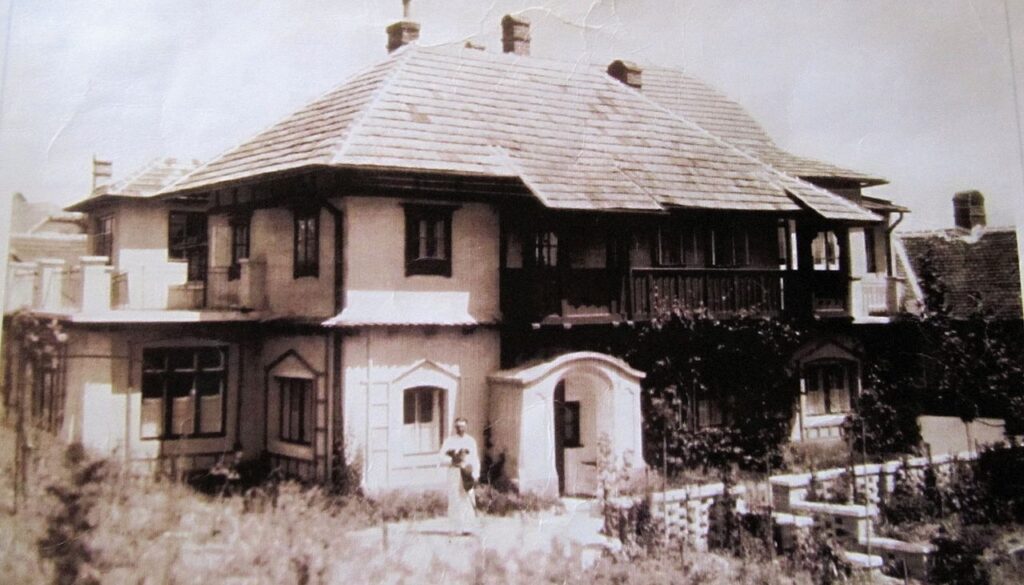
By 1903 Anežka bore him three more children - Jan, Božena and Petr. However, Peter died the next day after giving birth and Anežka began to show symptoms of lactation psychosis. They were so serious that she was transferred to the St. Anne's Hospital in Brno and, due to her acute mental illness, was placed in a psychiatric hospital in Kroměříž in 1905, where she remained until her death in 1959. Shaken, Uprka threw himself into painting, never looked for another wife and divided the care of his children and household among his friends. Towards the end of his Impressionist period (1899-1905), he also devoted himself to printmaking, especially the etching technique.
In 1922-37 he lived in Klobušice near Ilava in Slovakia in his own chateau with a studio. He was looking for new inspiration in the Slovak countryside, but he still went to Moravia. In 1928 he visited Dubrovnik, where he studied the costumes and life of the common people.
During his lifetime, he had several group exhibitions in Prague, Brno and Hodonín, some of which were co-exhibited with his brother, the sculptor Franta Úprka. Joža co-founded the Club of Friends of Art in Brno and the Association of Moravian Artists (SVUM) in Hodonín, he was also the main figure of the Moravian-Slovak Society, later the Ethnographic Moravia. In 1925 he was elected chairman of the Association of Slovak Artists in Bratislava.
When he returned to Hroznová Lhota in 1937, he was already ill. The last years of his life he was worried about his son Jan, who tried to take advantage of his father's fame and ride the Nazi wave. In 1938, he co-founded the National Fascist Community and a year later, as one of the signatories of an open letter to Adolf Hitler, he thanked for an independent fascist Slovak state and demanded the annexation of Moravian Slovácko to Slovakia.
However, Joža Uprka had nothing to do with the Nazis, he never campaigned for them, and he blamed his son for his attitude. There is a photograph of Karl Hermann Frank, a high-ranking Reich potentate, admiring his second most famous painting, Pilgrimage at St. Anthony'sbut he never got it.
Uprka's first-born son Jožka died at the age of 14, his daughter Božena, married to Nováková, took care of her father at the end of his life and wrote a memoir Discussions with Joža Uprka.
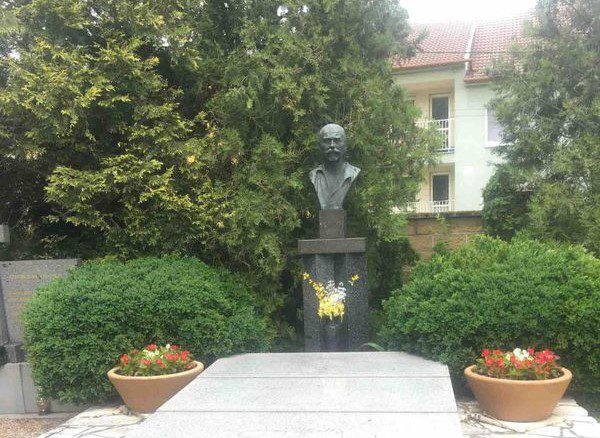
Joža Uprka died on 12th January 1940 in Hroznová Lhota near Kyjov from kidney failure, he was 79 years old. He is buried next to his brother Franta in the so-called "Slavonic Nightingale" (cemetery near the local church) in his native Kněždub.
Wikipedia/ Gnews.cz - Jana Černá



